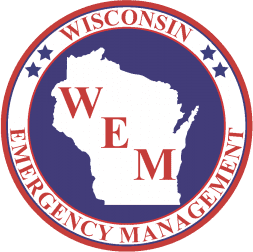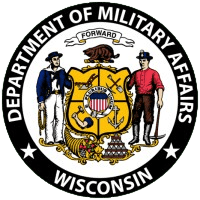Wisconsin’s Pre-Disaster Flood Resilience Grant
The Pre-Disaster Flood Resilience Grant (PDFRG), administered by Wisconsin Emergency Management (WEM), is created for the purpose of identifying flood vulnerabilities, identifying options to improve flood resilience, and restoring hydrology in order to reduce flood risk and damages in flood-prone communities.
Assessment grants shall support generation and gathering of information on vulnerabilities and identification of flood resilience priorities on a watershed, catchment, or stream reach scale.
Implementation grants shall be used for implementation of hydrologic restoration projects that have been either identified or designed through an assessment grant or comparable assessment process. Implementation grants shall support the regulatory coordination, engineering and design, construction, or post-construction monitoring of a hydrologic restoration project that reconnects streams and floodplains, reestablishes healthy channel form and condition, mitigates erosion hazards, removes or reduces wetland drainage, restores or improves natural flow and movement of water or sediment, or reestablishes vegetation to support site stability and help manage flow and infiltration.
The 2024 application period is now closed. Please watch this website for updates on future funding cycles.
FEMA’s Hazard Mitigation Assistance Grants
FEMA’s Hazard Mitigation Assistance (HMA) grant programs provide funding for eligible mitigation activities that reduce disaster losses and protect life and property from future disaster damages. Currently, FEMA administers the Hazard Mitigation Grant Program (HMGP), the Building Resilient Infrastructure and Communities (BRIC) Program, and Flood Mitigation Assistance (FMA) Program.
FEMA’s Hazard Mitigation Assistance (HMA) Guidance and Addendum applies to all FEMA mitigation grant programs (click the link below to download the resources)
Additional information can be found on FEMA’s Hazard Mitigation Assistance website.
Hazard Mitigation Grant Program (HMGP)
The Hazard Mitigation Grant Program (HMGP) makes grants available to state and local governments and Tribal Nations to implement long-term, cost-effective mitigation actions following a federal disaster declaration. Mitigation actions are actions taken to reduce or eliminate the long-term risk to life and property. The amount of funding made available is a percentage of total disaster costs and therefore will vary with each disaster. A project does not have to be in a declared county to be eligible for HMGP funding. Therefore, every community that is vulnerable to natural hazards should consider applying for HMGP funds.
Grant applications are submitted to WEM, which sets mitigation priorities and awards grants based on available funding and criteria established in the State Mitigation Plan. The top priority for this program is acquisition and demolition of flood prone structures. Other high priorities are elevation or relocation of flood prone structures, construction of tornado safe rooms, utility protection, storm water projects, education, and all-hazards mitigation planning. All projects must pass a Benefit-Cost Analysis using FEMA’s software and undergo a review for environmental and historic preservation impacts.
FEMA conducts the final eligibility review to ensure that all projects are compliant with Federal regulations, including the federal law that requires states and communities to have a FEMA-approved hazard mitigation plan in place prior to receipt of HMGP project funds. In order to receive HMGP funds, the community must be participating in and in good standing with the National Flood Insurance Program (NFIP). Projects can protect either public or private property. Successful projects receive 75% federal funding with 12.5% state funding. The applicant is responsible for 12.5% of the project costs.
Additional information can be found at FEMA’s Hazard Mitigation Grant Program (HMGP) Site: https://www.fema.gov/grants/mitigation/hazard-mitigation
Building Resilient Infrastructure and Communities (BRIC) Program
The Building Resilient Infrastructure and Communities (BRIC) program is an annual, nationally competitive grant program for state agencies, county governments, local governments and Tribal Nations to implement long-term, cost-effective mitigation actions that mitigate risk to infrastructure and community lifelines.
BRIC program priorities include:
- Mitigation measures that incentivize natural hazard risk reduction activities that mitigate current and future risk to public infrastructure
- Incorporate nature-based solutions
- Enhance climate resilience and adaptation
- Increase funding to applicants that facilitate the adoption and enforcement of the latest published editions of building codes.
WEM does not set the priorities for this grant program – FEMA awards grants based on available funds and criteria set in the Notice of Funding Opportunity. WEM does work to fund as many grants as possible under its set-aside allocation for planning, capability & capacity (C&CB) grants, and traditional mitigation projects. All projects must pass a Benefit-Cost Analysis using FEMA’s software and undergo a review for environmental and historic preservation impacts.
All subapplicants must register in SAM.gov, and keep that registration active through the life of the grant, participate in a FEMA-approved local hazard mitigation planning process, and submit their application in the FEMA GO system.
Flood Mitigation Assistance (FMA) Program
The Flood Mitigation Assistance (FMA) program is a nationally competitive program through which communities can receive grants for the development of a comprehensive flood mitigation plan and the implementation of flood mitigation projects. Mitigation actions are actions take to reduce or eliminate the long-term risk to life and property. Communities must participate in the National Flood Insurance Program (NFIP) to receive FMA funds. All projects must pass a Benefit-Cost Analysis using FEMA’s software and undergo a review for environmental and historic preservation impacts.
The overall goal of FMA is to fund cost-effective mitigation actions that reduce or eliminate the long-term risk of flood damage, and thus flood insurance claims, for NFIP-insured structures. Other goals are to reduce the number of repetitively or substantially damaged structures and the associated claims to the NFIP; encourage long-term, comprehensive flood mitigation planning; respond to the needs of communities participating in the NFIP; and complement other federal and state mitigation programs with similar goals.
FMA project grants are used to implement mitigation activities that reduce flood losses to NFIP-insured properties by elevating, acquiring and demolishing, or relocating NFIP-insured buildings. The cost sharing depends on the type of properties included in the grant. Severe repetitive loss properties can receive 100% federal funds, repetitive loss 90%, and all other properties 75%. The remaining portion is the required local match.
Severe repetitive loss properties are NFIP-insured structures:
· That have had four or more separate claims payments (building and contents) over $5,000 each, totaling $20,000 or more; or
· That have had at least two separate claims payments (building only) that have cumulatively exceeded the market value of the structure.
Repetitive loss properties are NFIP-insured structures that have incurred flood-related damage twice, with the average cost of each repair equaling or exceeding 25% of the market value of the structure. To qualify as a repetitive loss property, the contract for flood insurance must contain Increased Cost of Compliance (ICC) coverage at the time of the second claim. WEM Mitigation Section staff can help you determine whether a given property is listed as a repetitive loss or severe repetitive loss property.
Additional information can be found on:

